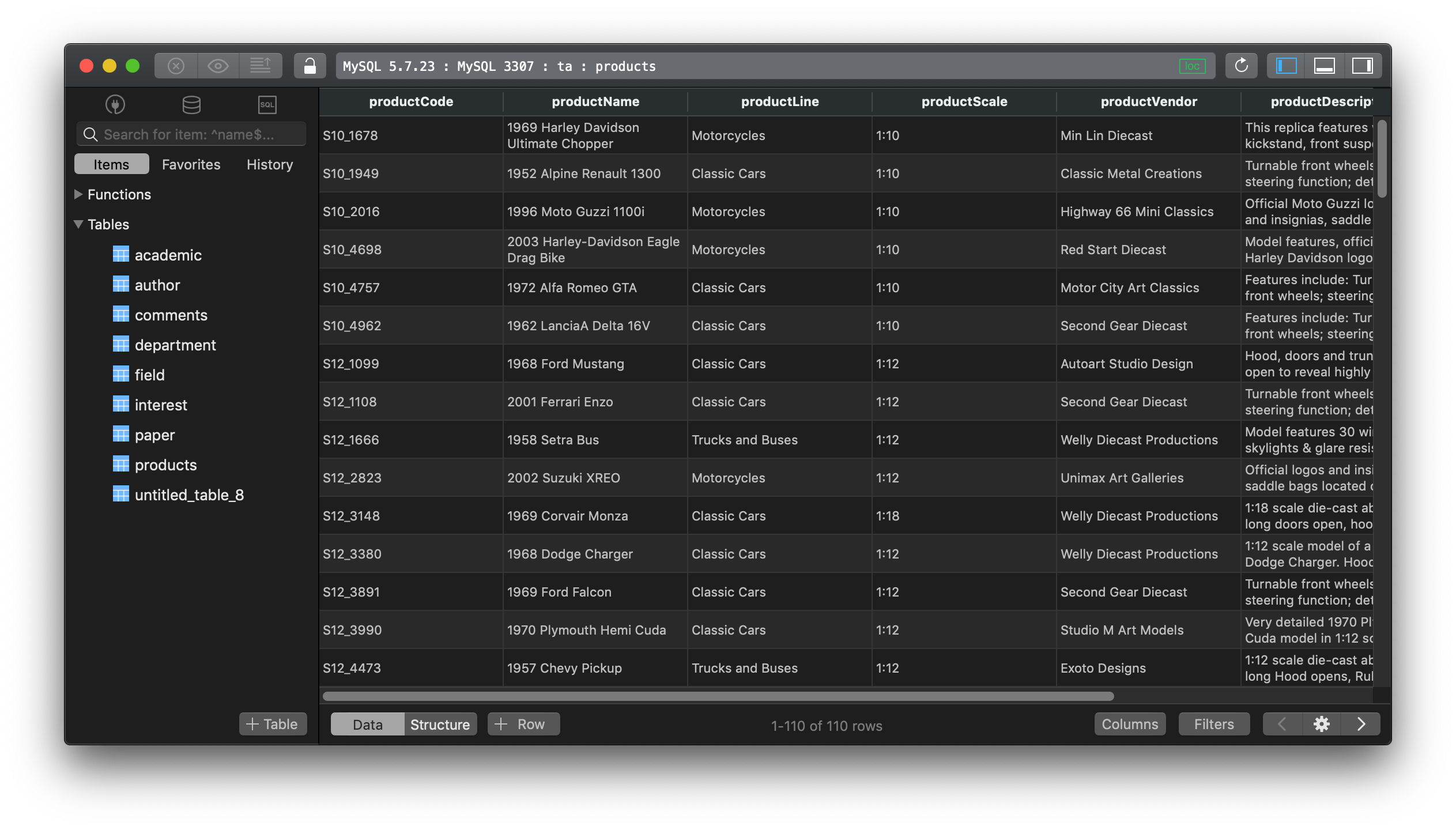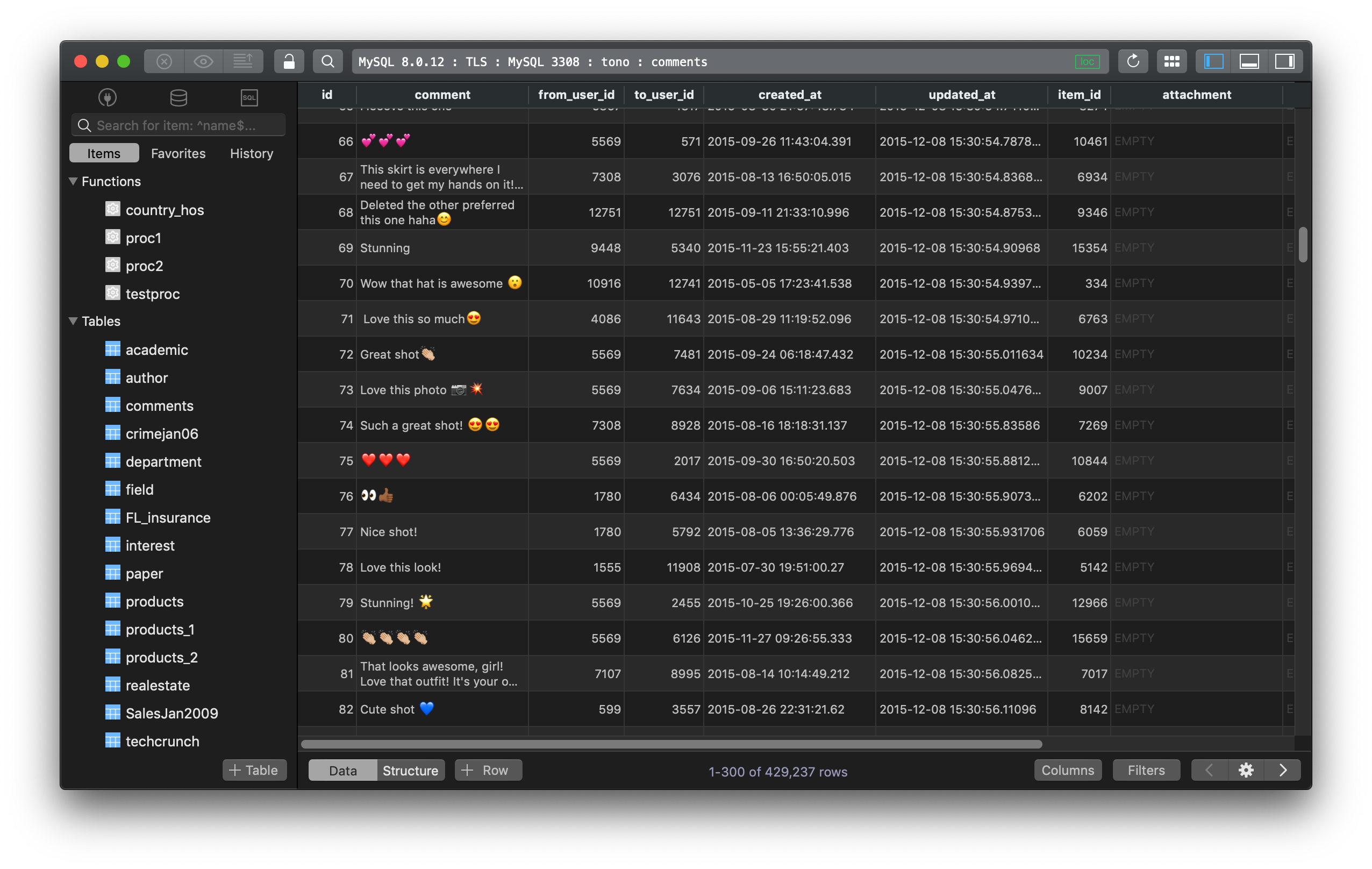

Tableplus cassandra code#
It also has a convenient SQL editor with syntax highlighting, auto-completion, split windows, code refactoring, history, favorites, and a preview of results. When you edit a query, there is code review and safe mode. All fields can be edited inline editing with advanced data filtering. Work with databases is built on the principle of simple and intuitive interaction. The application has the support of multiple tabs or windows. And dark theme available out of the box even on OS below Mojave.

If necessary, the connection can be configured in options with multi-stage authorization and native encryption libssh/TLS.Īll data can be easily exported and imported as dumps.Īppearance TablePlus can be adjusted to you. The connection to the database takes a few seconds. It was developed to support the macOS native instruments. The main advantage of the program is a modern, easy and fast interface. TablePlus supports a dozen databases: PostgreSQL, Amazon Redshift, MariaDB (MySQL), Cockroach DB, SQL Server, SQLite, Oracle, Redis, Apache Cassandra, MongoDB, and Vertica.
Tableplus cassandra windows#
TablePlus is the app for Windows and macOS to work with databases that has a beautiful modern interface, intuitive GUI, and support for popular relational databases. This is autotranslated version of this post. I like lightweight, easy-to-understand interfaces and user-friendly app. Looking to take your Cassandra skills to the next level? Check out DataStax Academy for more.At work, I often have to work with databases. We've made it easy and cost effective to count your data. Give it a try and let us know what you think. Instead, use one of the options outlined above to save resources and still find the answers you’re looking for. You can run the count(*) function in Cassandra just like you would in other databases.

A developer or DBA will run count(*) after a batch load to validate the number of records loaded or to find the number of rows in a table. A count(*) will need to scan all the SSTables on all the nodes in the cluster. Because Cassandra is a distributed operational database, the tables are spread across all the nodes in the cluster.

Supports highly customizable UI including configurations and appearance.
Tableplus cassandra full#
Running count(*) is expensive in any database, because a full table scan is required. TablePlus is one of the most widely used on-premise database management clients supporting multiple types of databases ranging from SQL databases, like MariaDB, MySQL, and NoSQL databases, such as MongoDB and Cassandra. Count(*) is a function that returns the number of rows in a table.


 0 kommentar(er)
0 kommentar(er)
